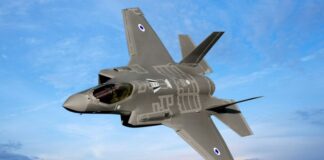Australia is again imposing its wishes on PNG today through having it warehouse refugees. Australian direct colonial control of PNG lasted from 1906 to 1975. Like European colonialism everywhere, it was a brutal operation.
When Australian gold prospectors came to Papua, historian Hank Nelson writes, “From the 1880s to the opening of the highlands fields in the 1930s there were occasions when prospectors shot villagers, burned houses and stole pigs and garden food.
“At Milne Bay… the miners murdered and burned to clear the area of people who were of no use to them.”
The Bindandere people fought the miners and government officers and “were slaughtered in large numbers.” The Anga lost fewer men by waging a guerilla war.
As Australia did not want to develop PNG, only plunder its resources, colonial administration’s role was one of trying to control the local population. From 1888 to 1940 in Papua, an average of 1000 men a year were indentured to the miners, in a form of slave labour.
The first Administrator of the British colony of Papua (south east New Guinea), Sir William Macgregor, wrote the Australian Premiers in 1888 that, “There is only one thing they [the Papuans] respect, that is force.” A total of 6000 whites controlled the government and dominated the cash economy in a country of two million.
When Australia took control of German New Guinea (the north east half) in 1914, military confinement and flogging were the penalties for breaking “labour discipline”. The new Australian Administration promptly increased the maximum number of strokes allowable from 10 to 20!

Cargo Cults
The earliest forms of revolt against European domination were various cargo cults.
PNG landowners were overawed by the great abundance and variety of goods possessed by European settlers. As Europeans brought all these goods from offshore, PNG landowners could not understand how they came to have them. They often attributed their origin to the supernatural.
Cults worshipping European goods sprang up. Cargo cults were both political and religious.
A movement among the Papuans, which in typically elitist colonial fashion was called the “Vailala madness”, developed in 1919. Its leader said that in order to obtain the goods Europeans had the Papuans would have to drive out the Europeans.
Time to go
With the advanced capitalist countries dropping direct political control of their colonies in Africa and Asia in the 1950s, the Australian government was under pressure to follow.
The Australian government wanted its aid payments to PNG to decline over time. Its solution to a self-funding PNG was large-scale mining, especially on Bougainville.
The Australian Colonial Administration (ACA) imposed the Rio Tinto Panguna copper and gold mine against opposition from Bougainville landowners in 1969.
The Rorovana people refused to sell their land and declared, “we will fight to defend our land.” The ACA compulsorily acquired it.
The ACA’s District Commissioner Ashton later admitted he had offered a “mere pittance” for it.
In August 1969, Ashton led riot police armed with batons and teargas to force people off their land. A group of 65 unarmed villagers stood their ground. After 150 tear gas shells failed to move them, riot police waded in with their truncheons.
An editorial in then left-leaning, The Australian wrote, “The use of tear gas and clubs to enforce alien laws on an uncomprehending people was a damning indictment of the Administration of PNG—which is to say of Canberra.”
Inside PNG, the pressure for independence built up. In July 1968, a crowd of 3000 people in Port Moresby came to see Australian PM John Gorton on his visit. University students held placards saying “John Gorgon—Prime Monster of Australia” and chanted for him to “go home”.
The next year in Rabaul, 10,000 people marched on the office of the District Commissioner with placards that read, “It’s free country. Let us have our own choice.”
Australia’s rulers regarded PNG as a key to their military interests, but they didn’t want it to have real political independence.
Academic Edward Wolfers wrote that, “Ninety years of colonial rule has not produced a sufficient number of skilled and experienced indigenous personnel to man the modern state…Unlike its British counterpart, the Australian government never sought seriously to induce its most talented young men to enter colonial service. Nor did it deliberately foster the emergence of a PNG administrative or political elite – at least not until the late 1960s, when it was too late for adequate numbers of educated PNGers to acquire experience…before independence.”
Australian unwillingness to resource PNG meant it remained a weak state in need of Australian aid after independence in September 1975. This was what Australia’s rulers had always wanted: a pliable border state.
Tom Orsag





